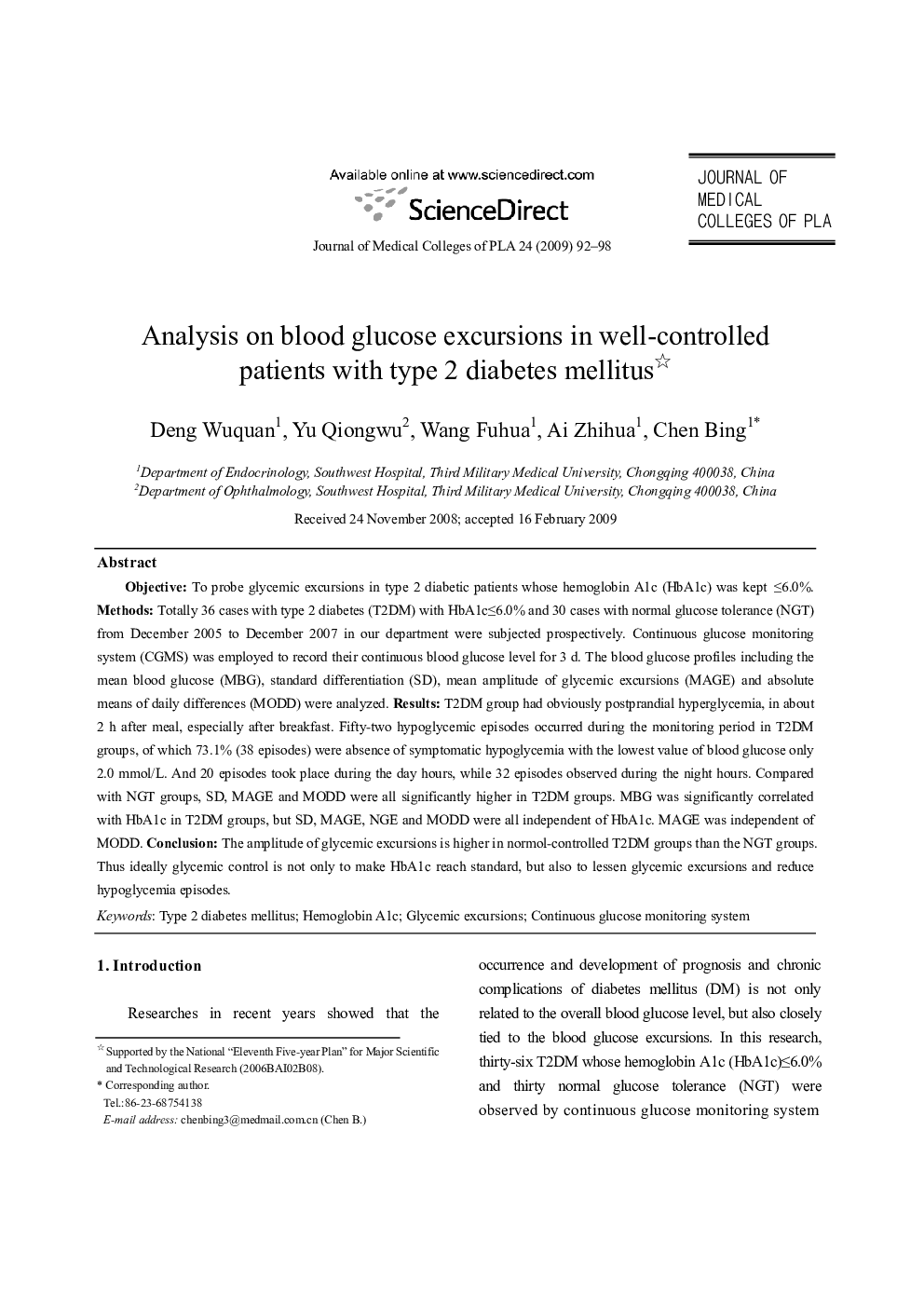| کد مقاله | کد نشریه | سال انتشار | مقاله انگلیسی | نسخه تمام متن |
|---|---|---|---|---|
| 3482756 | 1596825 | 2009 | 7 صفحه PDF | دانلود رایگان |

ObjectiveTo probe glycemic excursions in type 2 diabetic patients whose hemoglobin A1c (HbA1c) was kept ≤6.0%.MethodsTotally 36 cases with type 2 diabetes (T2DM) with HbA1c≤6.0% and 30 cases with normal glucose tolerance (NGT) from December 2005 to December 2007 in our department were subjected prospectively. Continuous glucose monitoring system (CGMS) was employed to record their continuous blood glucose level for 3 d. The blood glucose profiles including the mean blood glucose (MBG), standard differentiation (SD), mean amplitude of glycemic excursions (MAGE) and absolute means of daily differences (MODD) were analyzed.ResultsT2DM group had obviously postprandial hyperglycemia, in about 2 h after meal, especially after breakfast. Fifty-two hypoglycemic episodes occurred during the monitoring period in T2DM groups, of which 73.1% (38 episodes) were absence of symptomatic hypoglycemia with the lowest value of blood glucose only 2.0 mmol/L. And 20 episodes took place during the day hours, while 32 episodes observed during the night hours. Compared with NGT groups, SD, MAGE and MODD were all significantly higher in T2DM groups. MBG was significantly correlated with HbA1c in T2DM groups, but SD, MAGE, NGE and MODD were all independent of HbA1c. MAGE was independent of MODD.ConclusionThe amplitude of glycemic excursions is higher in normol-controlled T2DM groups than the NGT groups. Thus ideally glycemic control is not only to make HbA1c reach standard, but also to lessen glycemic excursions and reduce hypoglycemia episodes.
Journal: Journal of Medical Colleges of PLA - Volume 24, Issue 2, April 2009, Pages 92-98